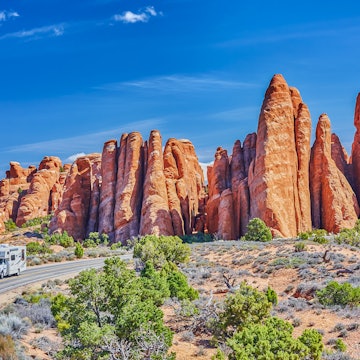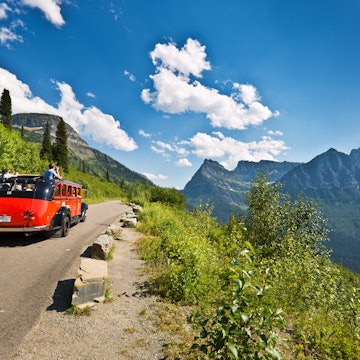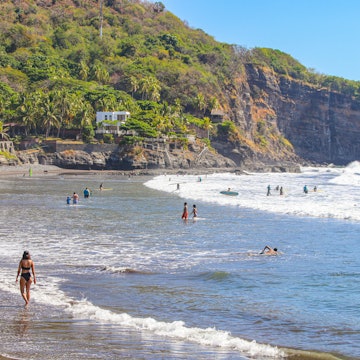
A guide to the Yucatán Peninsula

The Pyramid of the Magician, Uxmal. Anton_Ivanov/Shutterstock
Only one region in Mexico can dazzle you with ancient Maya ruins, azure Caribbean waters and photogenic colonial cities, all within close proximity of one another: the Yucatán Peninsula.
Composed of three separate states – Yucatán, Quintana Roo and Campeche – Mexico’s southeastern corner boasts a staggering array of natural and human-made wonders. This is the place to come to snorkel with sea turtles, explore cenotes (water-filled sinkholes) and kayak through biosphere reserves, followed by evening drinks by the beach.
Conjured out of thin air in the 1960s, Cancún’s powdery sands and tropical resorts have made it famous throughout the world. Yet it’s only one of the many seaside destinations along Mexico’s near-endless Caribbean shoreline. This coast is also home to buzzing cities, sleepy fishing towns and lagoon-fronting villages, not to mention enchanting island getaways like Cozumel and Isla Mujeres. All are surrounded by a colorful wonderland that lies beneath the water’s surface, part of the world’s second-largest barrier reef.
Head to the Yucatán’s forested interior to discover fabled archeological treasures. The towering pyramids of Chichén Itzá, Uxmal and Calakmul are but a few of the dozens of sites bequeathed to the world by the Maya. The Spanish also left their mark in cobblestone-lined, pastel-hued city centers first laid out more than 400 years ago and little-changed today.
Fast-forward to the present, and you’ll find plenty of sophisticated modern attractions, from art galleries and artisan markets to street performers and nightlife – proving that culture on the Yucatán continues to thrive.
Here’s a full guide to Mexico’s Yucatán Peninsula.

When should I go to the Yucatán Peninsula?
The Yucatán’s tropical location means the days are steamy here all year long, though the months from November to March are slightly cooler. Come April, sargassum seaweed begins washing onto the Caribbean beaches (which lasts until September), though resorts and beach clubs do their best to clean it up. (Note that the beaches on the Gulf Coast, especially around Progreso, remain seaweed free.)
In May, whale shark season (lasting until September) brings wildlife fans to Isla Holbox and the northeast coast. It’s a pricey but memorable undertaking getting to swim (or snorkel) with the largest fish on the planet. Four of the world’s seven sea turtles nest on the shores of the Yucatán, and June is a prime month for these ancient creatures arriving at Caribbean beaches to lay their clutch of eggs.
Hurricanes threaten the region from June to November, with the peak of the season occurring in September. The Yucatán has been hit with increasing frequency in recent years, so keep an eye on the weather wherever and whenever you go.
Late October to early November features Día de Muertos (Day of the Dead) celebrations, known on the Yucatán as Janal Pixán (Food of the Souls): a time for remembering deceased family members and sharing meals. Come December, the holidays bring huge crowds and higher prices, as well as a norte (northerly wind) that can occasionally interrupt diving and snorkeling plans with rough seas. New Year’s Eve features midnight fireworks and late-night revelry in many towns.

How much time should I spend on the Yucatán Peninsula?
Since frequent flights from most major North American (and a few European) cities reach Cancún’s airport, it’s possible to get an introduction to the Yucatán’s pleasures over a long weekend. Spend one day seeing Mayan ruins and enjoying the boho-chic beach clubs of Tulum, then get an early start at Chichén Itzá, one of Mexico’s most important and best-preserved archeological sites. After a few hours exploring (bring plenty of sunscreen and water), head to the charming colonial city of Valladolid, perhaps stopping off at a cenote (or three) along the way. On day 3, continue to Mérida, home to a vibrant historic district and a thriving culinary scene.
As always, we’d recommend taking more time to see even more of what Yucatán has to offer. In 5 days, you could tack on more beach time at the resort hub of Cancún or (for a contrast) vehicle-free Isla Holbox. Drop down to Playa del Carmen for nightlife and then ferry out to Cozumel for memorable diving amid spectacular coral reefs.
If you have a week or more, you can continue south to Bacalar, an easygoing village by an enchanting lagoon, then head inland to the remote jungle ruins of Calakmul – and continue on to Campeche to walk a historic city center surrounded by imposing fortifications.

Is it easy to get around on the Yucatán Peninsula?
Facing both the Gulf of Mexico and the Caribbean, the famous peninsula is heavily forested, its flat landscape dotted with historic towns, Maya settlements, ancient ruins and thousands of cenotes.
An extensive network of buses connect the towns and cities of the Yucatán; ADO is the principal operator of intercity coaches. In some places, including along the Caribbean coast, colectivos (shared vans or taxis) provide fast and inexpensive transportation.
A major undertaking that saw its first passengers in 2023, the 1554km railway known as the Tren Maya (Maya Train) loops around the Yucatán Peninsula. The network links major cities and Maya ruins (including Chichén Itzá and Calakmul) in a circuit around the peninsula. Note that most stations are located far from their named destinations and require a connecting bus.
Having your own set of wheels allows you to visit remote ruins, as well as less developed areas in the interior and along the north coast. A tolled expressway will get you from Cancún to Mérida in 3.5 hours, while a major highway runs the length of the Riviera Maya, from Cancún to Tulum. Beyond such major arteries, driving can be challenging on the Yucatán: expect narrow roads, bad potholes and many, many speed bumps. What’s more, car-rental rates and fuel can be pricey. Build your budget accordingly.
Top things to do on the Yucatán Peninsula

Relax on car-free Isla Holbox
On the peninsula’s northern coast, Isla Holbox once attracted only windsurfers and beach bums. Yet today, swanky swing bars, beachfront yoga and lobster pizza are calling to travelers of all ages and interests (including windsurfers and beach bums). Equal parts quirky and cool, Holbox has a diverse and delicious food scene, low-key but fun nightlife, and an independent and adventurous clientele, who flit around the soft, sandy and car-free island by foot or ATV. Best of all, the entire island is part of the vast Yum Balam Nature Reserve, which protects 150 species of birds (including flamingos), as well as migrating whale sharks, which you can see if you come between May and September.
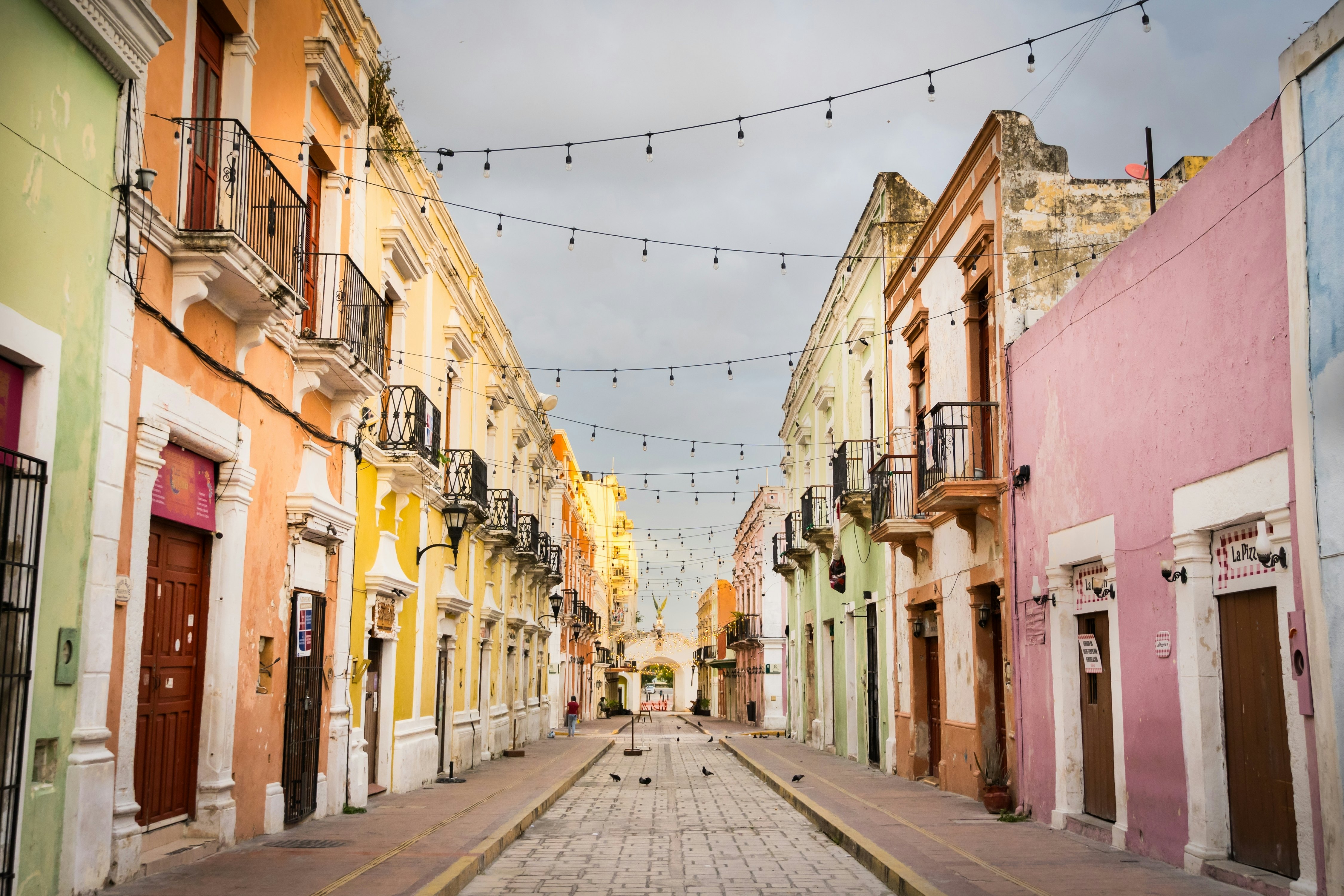
Savor the charms of Campeche
A popular stop for travelers making their way from Mérida to mainland Mexico, San Francisco de Campeche (or just Campeche City) is a worthwhile destination in its own right, rich with history and architectural treasures.
The city’s defining feature is its imposing walls, built in the 17th century to protect residents from pirate attacks. Nowadays, the walls and bastions are open for exploration and for taking in sweeping views over the city. Inside the protected center, pretty houses and haciendas are painted in pastels and trimmed in white, with artisanal shops and fantastic restaurants lining the streets. It’s an exquisitely restored, picture-perfect town that’s a UNESCO World Heritage Site.
Leave the inner walls and you’ll find a bustling Mexican provincial capital, complete with a frenetic market, peaceful malecón (waterfront promenade) and old docks lined up along a jade-green sea.

Go cenote-hopping
Even though the Yucatán’s interior is covered in lush jungle, this rain-rich region is completely devoid of rivers. For rather than pooling in streams, the water that falls here seeps through the peninsula’s base of permeable limestone, forming an underworld of interconnected subterranean rivers and semi-submerged caverns. Over the centuries, many of these cavern roofs have collapsed, exposing the underground water to the sky – forming Yucatán’s famous cenotes, ideal spots for swimming, diving and beating the brutal heat.
Hopping in your car to reach some of the more isolated cenotes – such as Cenote de Dzitnup, Cenote Agua Dulce (“freshwater”), Cenote Palomitas and Cenote Yokdzonot – is one of the Yucatán’s great adventures. Yet countless smaller cenotes lie just in from the Caribbean coast, while Cenote Zací sits smack in the heart of Valladolid’s historic center.

Eat your way through marvelous Mérida
Since the arrival of the Spaniards, Mérida has been the cultural capital of the Yucatán Peninsula. A delightful blend of the provincial and the cosmopolitan, this is a city steeped in history, with narrow cobblestone streets, broad leafy plazas and the region’s best museums, including a fantastic collection of Maya archaeological finds. Mexicans adore Mérida in particular for its food scene – for Yucatecan cuisine is like nothing else in Mexico.
Seek out hits like papadzules (tortillas filled with hard-boiled eggs and topped with puree made of roasted pumpkin seeds), panuchos (black-bean stuffed crispy corn tortillas topped with a variety of delicacies), relleno negro (turkey and ground pork cooked in a sauce made from blackened chilies) as well as cochinita pibil (slow-cooked pork with spices). You’ll find such dishes in specialty restaurants like Museo de la Gastronomía Yucateca, as well as in the market: the casual restaurants at Plaza Santiago have many fans.
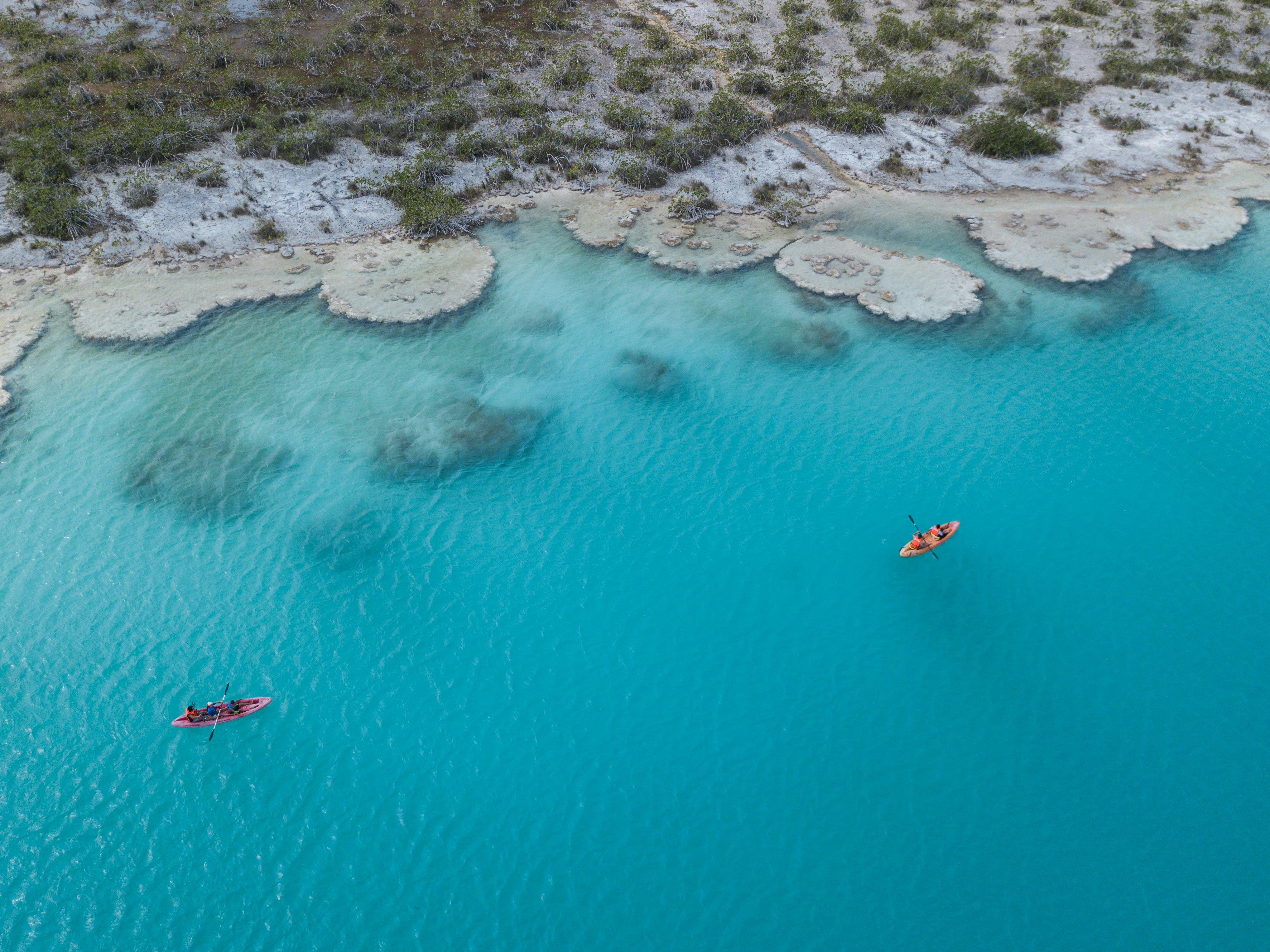
Jump into the freshwater Laguna de Bacalar
South of chic but arguably overexposed Tulum, Bacalar is a town with a high charm factor – and the gateway to a freshwater lagoon that’s simply extraordinary. On the 60km-long lagoon, sunrises and sunsets often bring fiery hues; the lure of the water, with its own dramatic colors, is insurmountable. Spend the day gliding on a paddle board over the crystalline surface, zipping around to scenic swimming spots on a boat tour, or just lounging dockside watching great blue herons stalk through the shallows.

Soak in the majesty of Maya monuments
The mighty Maya civilization dominated the Yucatán for some 3500 years, reaching its zenith during the Classic period between 250 BCE and 900 CE. While the Yucatán’s jungles have reclaimed most traces of the Maya’s mighty cities and religious sites, painstaking archeological work has revealed some of the most astonishing monuments ever constructed by humans.
An hour’s drive from Mérida, impressive Uxmal (pronounced “oosh-mahl”) ranks among Mexico’s top (and most visited) archeological sites, with an array of fascinating structures in good condition and some elaborate ornamentation. Uxmal’s calling card is the Palacio del Gobernador, with its magnificent 100m-long facade festooned with stylized faces of Chaac (the Maya rain god) and geometric designs.
For anyone passionate or merely curious about Maya culture, a journey along Hwy 186 (aka the Archeological Corridor) will be a highlight of any Mexico trip. The jewel of the route is Calakmul, seat of the fearsome “Snake Kingdom.” Set amid the lush forests of the Reserva de la Biosfera Calakmul, this an extensive site is replete with intriguing structures, including one of the highest pyramids in the Maya world. Other Maya sites along the 160km-long Hwy 186 include Balamakú, Becán, Chicanná and Xpuhil.
The most famous and best-restored of the Yucatán Maya sites, Chichén Itzá will impress even the most jaded visitor. Stretching across 10 sq km, the great city was once home to an estimated 50,000 people during its peak more than 900 years ago. Today, the archeological preserve is home to an astonishing array of ruins, including majestic temples and a towering pyramid.
Even with the hordes who visit here every day, you’ll be amazed. Take in the scale of El Castillo (or the Pyramid of Kukulcán), conjure the matches that once took place at the ball court, look closely at the eerie iconography of the Platform of Skulls, then consider the sacred rituals that once took places at the Cenote Sagrado.
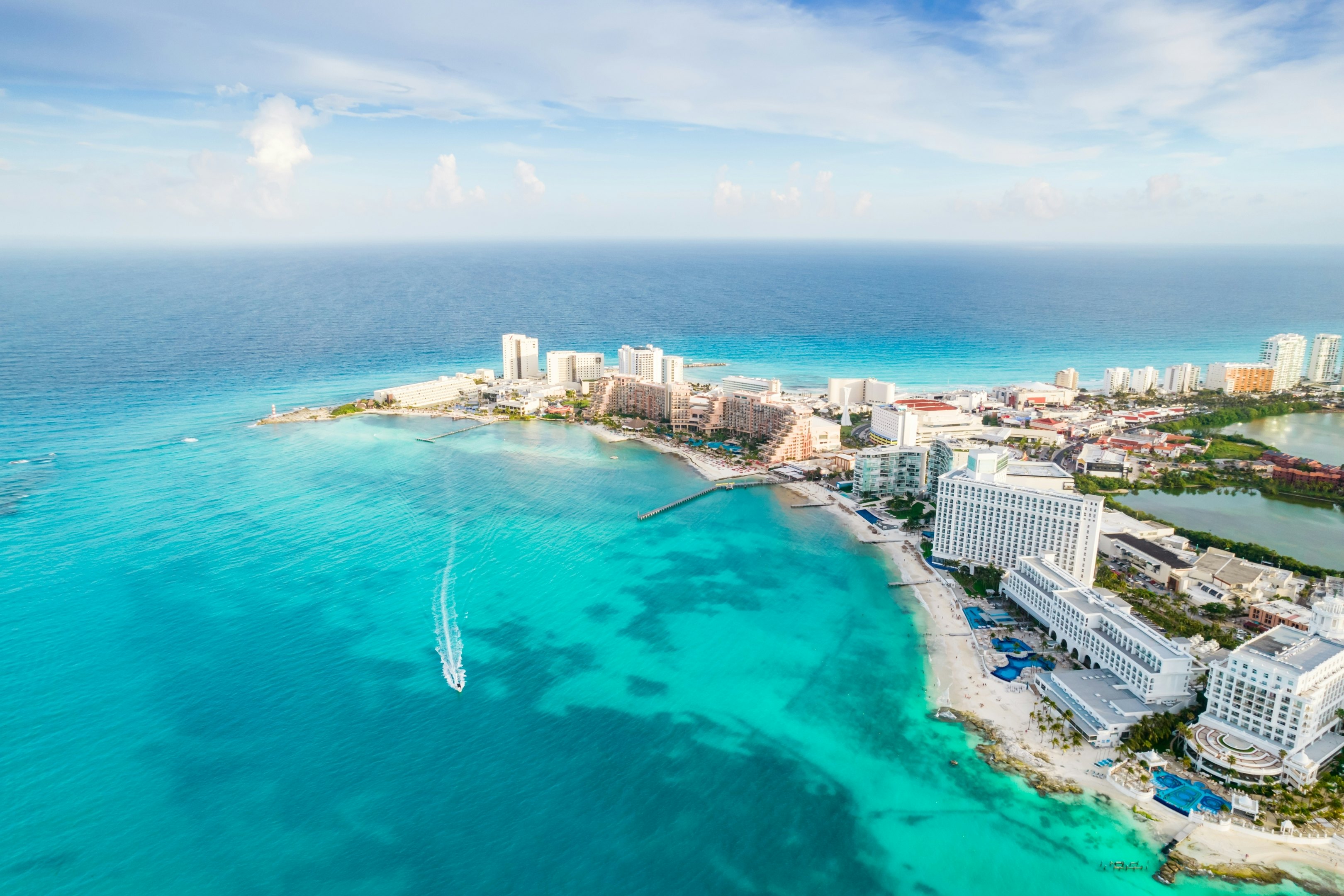
How much money do I need for the Yucatán Peninsula?
One-way bus ticket from Cancún airport to Playa del Carmen: from 250 Mexican pesos
Three-course dinner at La Chaya Maya in Mérida: from M$400 per person
Average price for a hotel room in Cancún: M$2200 per night
Adult admission to Chichén Itzá: M$648
Full-day paddle board rental in Balacar: from M$500
Ferry ticket from Chiquilá to Isla Holbox: M$330
This article was adapted from Lonely Planet’s Mexico guidebook, published in October 2025.











